The Vietnam War was a polarizing force in American society from the time U.S. troops were deployed there in 1965 until they were withdrawn in 1973. College campuses often served as focal points of the peace movement, partly because the war directly affected all college-age young men who were being drafted to serve on the battlefields of Vietnam.
This exhibit provides a glimpse of the anti-war protests on the College Park campus during the Vietnam War era. It was mounted as part of the campus-wide Semester on Peace in Fall 2009. If you were on campus during the Vietnam War, we especially invite you to share your memories on this site.
The photographs displayed in the physical exhibit that accompanied this blog were drawn from three collections in the University of Maryland Libraries:
The Baltimore News-American Photograph Archive is a collection of over 1.5 million photographic images, dating roughly from 1906 to 1986, of an active daily newspaper that existed in various forms for more than 200 years until it ceased publication in 1986. The photos displayed were taken by staff photographers and include some that were never published in the newspaper. They are not included on this site because of copyright restrictions, but may be viewed in person by visiting Hornbake Library.
The University Archives serves as the collective memory of the University of Maryland and is the official repository for all of the university’s permanent records and memorabilia that document all aspects of campus life. The photos displayed were drawn from the Philip Geraci Collection. Philip Geraci was a University of Maryland alumnus and lecturer in the Journalism Department who taught news photography courses. These photographs were taken by his students.
University AlbUM is a digital collection of more than 1300 images of UM student life, athletic events, student athletes, faculty, agricultural pursuits, commencement ceremonies, campus facilities, and much more. The photographs on this page are from University AlbUM and link directly to those images in the digital collection.
The Baltimore News-American Photograph Archive and the Philip Geraci Collection, as well as a wealth of additional materials on this subject, may be accessed in person from the Maryland Room in Hornbake Library at the University of Maryland.
Tuesday, November 10, 2009
Subscribe to:
Post Comments (Atom)
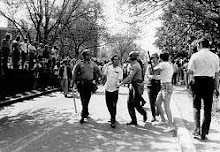
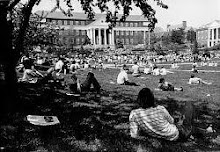
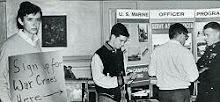
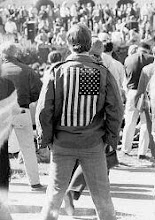
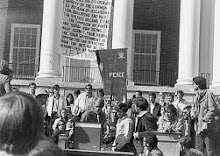
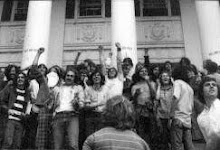
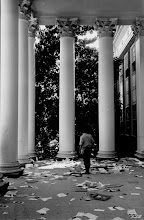
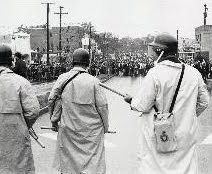
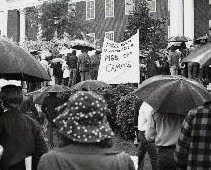

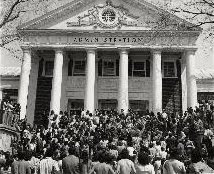
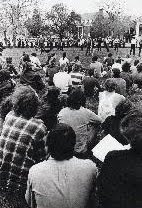
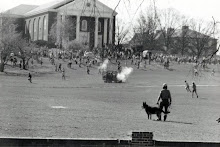



Thanks for the memories. During those years it was impossible not to be affected by the war, the protests and its impact on the campus. I participated on two levels: as a conscientious student who opposed the war and also as a RATV major, I reported on the news at the campus radio station and in my TV and film courses. With the benefit of 20:20 hindsight, it’s amazing to see how our youthful energies were subverted by the leftist movement in the wake of the millions who ultimately were murdered in the “Killing Fields” of Vietnam, Cambodia, and Laos. I feel ashamed my fellow innocent students and I could be so easily used. The leftists robbed me of the pride I should’ve had for my country. I hope the students of today will benefit from the lessons of history.
ReplyDelete– Bill Selig ‘71
I was at Syracuse U '68-'70 and then University of Buffalo from '70-'72. As Bill wrote, "it was impossible not to be affected by the war." Sometimes it was a centerpiece of our lives, but at other times it was just one of several currents occurring, including the taste of freedom in an ever more permissive college scene. During my first semester, dorms changed from being totally off-limits to the other gender to being open -- and the next year started experiments in co-living. Unlike today, hitchhiking to get around the entire country was an accepted norm. With drugs and the peace movement, there developed for a time a relatively large and somewhat unified youth culture. We were probably not true pioneers, but there was broad experimentation with styles of living and life-goals that were quite different from the immediately preceding generations. We had our own publications including the then novel and pre-Internet "The Whole Earth Catalogue." The Vietnam War and our protests against it helped fuel these movements. Even worse than the Iraq War, the rationale for the Vietnam War was never convincingly articulated. It was fought with drafted soldiers, not volunteers. As a result, our post-War (WWII) generation felt no inclination to fight in what looked like someone else's civil war. It was a poorly managed war and the host country, So. Vietnam, was unstable, not particularly democratic and seemingly corrupt. Why fight and die for that? The stated answer from our elders and authorities was "because we did it and it is your duty." But this war had not been preceded by a Pearl Harbor or Twin Towers bombing. It did not have the hallmarks of a clear "good vs. evil" conflict. A turning point occurred in the Spring of 1970, when National Guardsmen in Ohio shot and killed four student protestors at Kent State University, a school I hadn't heard of before. Protests became so strong that we abandoned classes and eventually many colleges shut down ending the semester early. I was involved in protests at Syracuse, but I remember being annoyed that I wound up with a B in economics because I failed to answer a question on the mid-term that I didn't see was on the reverse side of the question sheet. The next year at Buffalo, I participated in protests for better treatment of prisoners at Attica who were rioting. I barely escaped getting hit by a batton when the Buffalo police attacked our protest at which William Kunstler was speaking. I hope I have conveyed a few of the many dynamics occurring during this period that if we were lucky enough to be a student was a very engaging and fun time. In the end, most of us were adolescents who were in love with a vast amount of freedome. As the draft gave way to a lottery and a volunteer army, and as protests became more violent, the sense of a unified generation went away with it. Those who lived through it, were changed -- the Boomer generation -- and have no doubt lasting personal memories.
ReplyDelete-- Rich, UB '72
Among the most powerful meanings I garner from this exhibit comes from its powerful documentation of the raw emotions, terrible messiness and contradictory confusions that accompany conflict driven transformational moments in history. As time passes we often tend to condense our memories and simplify our understandings. But the memories this exhibit and its commentary brought back to me are precisely how terribly is the price we pay when we base out convictions and responses on the demonization and dehumanization of others. The Vietnam War is one of history's clearest lesson that everyone loses when simple truths, fundemental justice and a shared sense of our common humanity gives way to positions and policy driven by ideology and expendiency and ill informed by deeper understandings and higher principles. In some respect the villians and the heroes of that time were one and the same. The most important question for today,however, is not who did what then, but what can we do now. Can we create peaceful processes to effective disperse what seem to be gathering clouds of newly obsured truths, persistent injustices and the increasing tendency to be dismissal of all who think diffeent from ourselves. For if we are not prepared to do so through peaceful processes that offer mutual respect and equitable benefits for all, we will once more find ourselves in a confrontational situation where everyone loses.The specter of Vietnam looks down at us from these photos, calling us to a new consciousness that would not allow this to happen again. John Grayzel- Baha'i Chair for World Peace
ReplyDeleteI find the "lessons of history" to be quite the opposite of Bill's reaction above. The "leftists" and all other anti-war activists of that time helped educate the American public about the true nature of the war. It was our government, the university and many other institutions of that time that were effectively "lying" to the public about the reasons for the war and the atrocities that were being committed in our name. Let us remember, just as with the Iraq War, the War in Vietnam was started with a lie, the Gulf of Tonkin incident.
ReplyDeleteThe killing fields of Cambodia were the result of the horrible carpet bombing and invasion of that country by the US in 1970. Let us also remember how the US government supported the Khemer Rouge government because it was fighting the Vietnamese.
I was a student at UMd from 1969-1973 and the mass opposition to the genocidal war in Vietnam changed my life, because it taught me how to question the prevailing "wisdoms" of the day and attain a true education.
The photo, "Fliers Littering an Entrance to a Campus Building, circa 1970-1975", may be mis-labeled. This looks more like the aftermath of the trashing of the ROTC offices that took place on May 1, 1970, (after the announcement by Nixon of the invasion of Cambodia), rather than "leaflets". Most protests up to that time had not been that large, but the outrage over the expansion of war into Cambodia was very widespread and overnight, a demonstration was organized for May 1 and thousands participated. The ROTC offices on campus were a symbol of University complicity with the war and when the administration refused to talk with the demonstrators that day, the intense anger spilled over to the ROTC offices and then to stopping "business as usual" by blocking Route-One. A nationwide student strike started the next week and some faculty participated by cancelling their classes for the rest of the year (which ended in June at that time). Instead of classes, the anti-war movement established all sorts of alternative learning experiences with workshops, seminars, theater, concerts and more rallies and protests as the National Guard occupied the campus for the next couple of months. A good chronology of that eventful month of May can be found at: http://www.route-one.org/radical-guide/30-days-last-may-2.html
ReplyDeleteThe Route-One.org website was established by activists from the time at UMd, after a reunion in 2005.
I served as a draftee in Vietnam as an infantry soldier from 1967 to 1968. Although a student on the Dean's list, I was declared ineligible for deferment, since I had worked 6 months to get the money for school and would not complete my education within 4 years of finishing high school. I had little understanding of the war before I went. My experience there opened my eyes to the reality of this war and the lies being propagated by the government about the war. In the Mekong Delta, where I served, we faced an almost exclusive indigenous guerrilla force which had controlled the area and organized it to be a orderly, productive and peaceful area, before our arrival there. We left behind destruction wherever we went, destroying shelter, food storage and planted rice fields. Our cost was also high in terms of resources, lost and crippled lives.
ReplyDeleteWhen returning to college after my service, I found natural allies in the diverse anti-war movement, since now I was determined that the senseless slaughter had to be ended and my comrades brought home. I felt that radical action was needed and justified to bring the war to an end, since the general population seemed to go about its business undeterred. I joined Vietnam Veterans Against the War and participated in every action I could to end the war. I came to the University of Maryland early in 1971 as a graduate assistant. I soon found a lively anti-war community and groups which led me to a deeper understanding of the source of the war, historically and structurally. The massive demonstrations and actions of students were relatively harmless in the face of the destruction that I had seen in Vietnam. They served well the purpose of bringing the war back home and putting it on the front page where it belonged.
The powers that be did take heed and we knew there were spies on campus. One was discovered in our Vietnam Veterans group. A student in one of the classes I taught was serving his last months of service at nearby Fort Meade. He told me that pictures of demonstrations at University of Maryland were being shown to him to see if he could identify anyone and he saw me in one of the pictures bu did not identify me. This was clearly illegal activity on the part of Army intelligence. When I sent for my FBI files under the Freedom Of Information Act, there was a picture of me in a crowd in front of McKeldin library at a Prairie Fire concert. Also included were accounts of me speaking to rallies on behalf of the Graduate Assistant's Federation (early attempt to organize Graduate Assistants in a Union) against funding cutbacks and fee increases. They did take notice.
Where are the students now in the face of more wasted and needless wars? The abolition of the draft certainly has a lot to do with it, since immediate self-interest is reduced as a motivation for opposition. Beyond that, our national interest is being damaged as resources are diverted from public needs to the war machine, and our standing in the community of nations is impaired. Damaged soldiers and body bags are again on the order of the day. Enough! Then as now, let's end it!
The biggest protests happened the year before I arrived at College Park, though there were some pepper-gas days. IMHO the biggest sin of the conservatives was oversimplifying the conflict into yet another Cold War proxy situation (domino effect) rather than an indigenous revolt against a foreign colonial power (in this case France). The biggest sin on the part of the protesters was vilifying the soldiers themselves instead of more properly vilifying the civilian authorities that gave the military their orders. Yes, this could also be an oversimplification, especially given the influence of the military-industrial-congressional complex, but still, the principle of civilian control of the military is very important (ask anyone who lives in South America!), and IMHO vilifying the military was just plain wrong.
ReplyDeleteI would disagree very slightly with the blogger in that the war continued to be one of tthe polarizing forces until the US defeat in 1975, not until 1973. Of course, the hubbub did die down some after 1973, but the protests continued.
ReplyDeleteI was a graduate MLS student at Kent State in 1970, and had left campus on Friday morning, tagging along on an Art Department bus trip to see the DC museums. My fiance lived in Laurel, and would be my way back to Kent the following weekend for Kent's scheduled spring celebration. I was to spend the week beginning a job search because I expected to graduate in August.
ReplyDeleteI was waiting for my husband-to-be to return from work in the apartment of mutual friends on Monday morning/afternoon. When we heard of the shootings at Kent, she and I were horrified as she was a former student. I was suddenly a graduate student without a school, and I had no idea how I was going to complete the requirements given to complete my classes.
I needed to write extensive papers to complete my classes, so I went to the office of the dean of the library school, knocked on his door and introduced myself and my dilemma. He kindly offered me a student card offering access to all MLS resources and giving me the information I needed to complete my papers.
I truly appreciate the kindness shown me in 1970 by the administrators of the University of Maryland.
On a personal note, my mother was pleased that I was not on campus in Kent, so I did not tell her until years later that UM had its own uprising in protest of the Kent State shootings. I still went to school with the National Guard and guns.
Thank you for the opportunity to share my personal experience.
I was an undergraduate at College Park from September 1964 to June 1969 when I graduated and went on active duty in the USAF (no, I wasn't ROTC, I only took one year because it was required). When the big protests occurred, I was stationed at Keesler AFB in Biloxi, Mississippi. My main memories stem from efforts to maintain my student deferment which included having to take a test on a Saturday morning sometime in 1966 in the BPA auditorium. The scuttlebutt was that if you didn't score high enough, you were going to be reclassified as 1-A. Since i took five years to graduate, I had to write a letter to my draft board in January 1969 basically pleading to be allowed to finish school. They made me a 1-S(C) for that semester and my induction notice was in the mailbox when I returned home from commencement exercises. As a commuter student, I really wasn't exposed to much of the on-campus activity during my years there. I do remember some SDS protest activity at recruitment events, but not much else. The campus was really transformed during that time, going from a school where upperclassmen wore coats and ties to class in 1964 and 1965 to one that was overtaken by the youth movement of the 1967-1968 time frame. Thanks to those who put this together. Those were times of great changes, mostly good, a few bad, but great changes nonetheless.
ReplyDeleteI viewed the protests from a different perspective - as an employee of UM. Barely 21 years old, moved to Maryland in early 1970. I was married in May 24, 1969 at age 19. Went on a honeymoon on a cruise ship to the Bahamas. Returned a few days later to learn that my husband had received his draft notice to report for the Army in a few short weeks. His family did not want to tell us until after our wedding and honeymoon. He had just a few weeks earlier graduated from the University of South Florida. He was stationed in Ft. Meade through an unbelievable twist of fate instead of going to Vietnam, where others in his unit were assigned. It was sad seeing the soldiers he went to boot camp with going to war, yet miraculously enough, he did not. I found a job at the University of Maryland working for the Director of the Graduate School as his Assistant. I had never lived outside of Florida but always wanted to work for a university. I remember the day of the protest of 1971. I was working with a student worker and heard of the protests. We were told to lock our doors. I could hear the students walking down the hall, knocking on the door, yelling, making noises. We knew something had happened in the building next door - the Administration Building. We were frightened. We watched the students from our window. After the building cleared we were told to go home. My car was parked across the campus near the main entrance. I had to walk, alone, to my car. I looked to my right and a line of National Guardsmen were walking toward me with their rifles held in shooting positions. I was really frightened. My husband was in the Army - not by his doing - we were totally anti-war, I was trying to make a living, and here I was with guns pointed at me. I walked quicker across the grassy area. Finally reached my car. I was safe. I have never forgotten that day and the fright I felt. We participated in the following anti-war demonstration in D.C. Thousands of people were there and even though we were part of the military, there we were in the streets of our nation's capital walking with the others who were protesting.
ReplyDeleteI was freshman living in Kent Hall. Remember the last photo well. Some of the tear gas was being fired over our heads while we ran. My brother was in the National Guard from the 5th Regiment Armory from Baltimore. I think they were already positioned along Route 1. I was not particular happy, because freshmen born in 1953 could not get a deferment and my lottery number was 64, but this mayhem was kind of exciting. I think it was May 17 and I should have been studying for mid-term. More activity after dark, the tear gas hoverd like a fog. We had no water pressure to wash the tear gas from our faces because there was no water pressure. The fire hydrants were on and many dumster and trash can fires were set. The tear gas permeated the inside of the dorm. Quite miserable.
ReplyDeleteI currently attend UMD and was in a History of Rock class and we were discussing protest music of the late 60's early 70's when my professor put up these pictures. I knew protests happened but never really thought about them happening at the places I see all the time today. Pretty cool if I must say myself. I especially enjoyed the shots of Route 1.
ReplyDelete